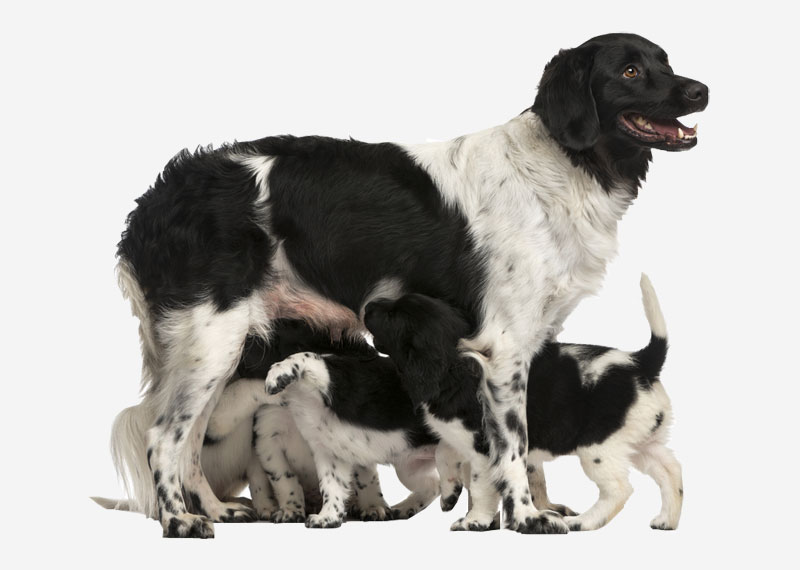The Stabyhoun or Stabij is a rare dog breed that just like the Wetterhoun originates from Friesland, a province in the North of the Netherlands. The first part of the name is probably from the Dutch: "sta me bij" (stand by me). The last part is simply Frisian, meaning dog, which is pronounced "hoon". There are only approximately 3507 Stabyhouns in existence today.
History
The Stabyhoun is a gundog that is first described in the early 1800s. In earlier days it was used for hunting foxes, small game, and birds. While on farms, Stabyhouns exhibited fine skills as a mole-catcher. During the hunting season, it was used as an all-round gundog. Today, the Stabyhoun remains a competent hunter, although United Kingdom and Germany breeds are more popular. It is a fine pointer, an excellent tracker, and also a good guard dog. It has also been used as a draught dog.Historically, these dogs were nearly exclusively owned by farmers, whose limited financial means dictated the need for an all-around working and hunting breed. Due to their versatility, Stabyhouns have been used as a guard dog on farms despite their origins as a gundog.The breed's appearance and purpose have not changed in decades. In earlier days the Stabyhoun was often mixed with another Friesian breed, the Wetterhoun, in order to optimize the traits of these working dogs. However, in 1942 the Stabyhoun received official breed recognition, and crossbreeding between the Stabyhoun and Wetterhoun has ceased.Today the Stabyhoun enjoys a small but thoroughly devoted following among Dutch sportsmen and homeowners. Its numbers are increasing slowly but steadily. This breed has caught the attention of dog lovers in the United Kingdom, Scandinavia and North America.
Health
The average life span of a Stabyhoun is 13–14 years.The Stabyhoun is a healthy dog. In the past the breed experienced some congenital issues, but with careful breeding, most of these problems were eliminated. Epilepsy occurred in the past, but is no longer a common genetic inheritance.
Care
The Stabyhoun does not require special care apart from regular brushing to minimize tangling. The dogs moult (shed) twice a year, and thorough brushing helps the process of shedding. Without brushing, Stabyhoun hair can get tangled and matted in the manner of dreadlocks. The hair behind the ears is particularly susceptible to tangling and matting. Washing with soap should be avoided when possible because soap strips the coat of its natural oils and shine. The Stabyhoun coat will naturally rid itself of dirt and mud. After a swim the dog is usually clean and dry in a matter of hours.
Breeding
Due to the limited size of the Stabyhoun population, careful breeding is essential. The Dutch Association for Stabyhouns and Wetterhouns has breed advisors. In an effort to prevent inbreeding, the Association keeps breeding at a minimum and carefully considers prospective matings. Despite there being small populations of Stabyhouns outside of the Netherlands, the breeding stock is small and the greatest genetic diversity remains in the Netherlands. Since Stabyhouns are viewed as part of the Dutch national heritage, breeders keep puppy and dog prices affordable; Stabyhoun breeders are commonly hobby breeders as a result. The average Stabyhoun litter size is seven. Bitches are limited to delivering no more than 5 litters in their lifetime.The bitch may only reproduce when she reaches a minimum age of 18 months, and cannot breed once she reaches the age of 9. At least one year should elapse between litters. The hips of prospective mating pair have to be x-rayed (not over FCI-C result), and the match between bitch and stud has to be approved by the Dutch Club's breeding committee. A stud must be 18 months of age or older to breed, and it must have with the same show and hip results as its female mate. A single pair of Stabyhouns may not produce over 8 litters in their lifetime. Stud dogs should not sire more than three litters a year. Stud-owners are expected to appear on breeders' days so that the dogs may be evaluated and paired with potentially suitable mates.




